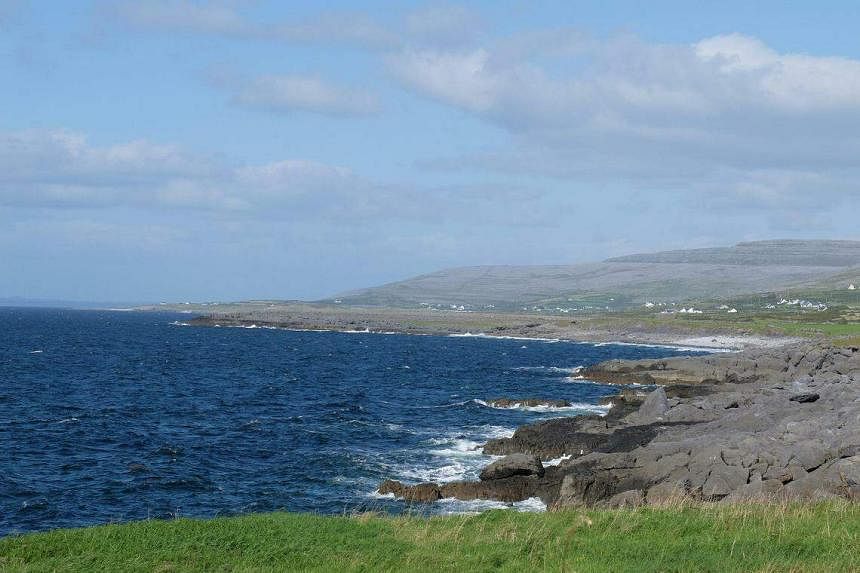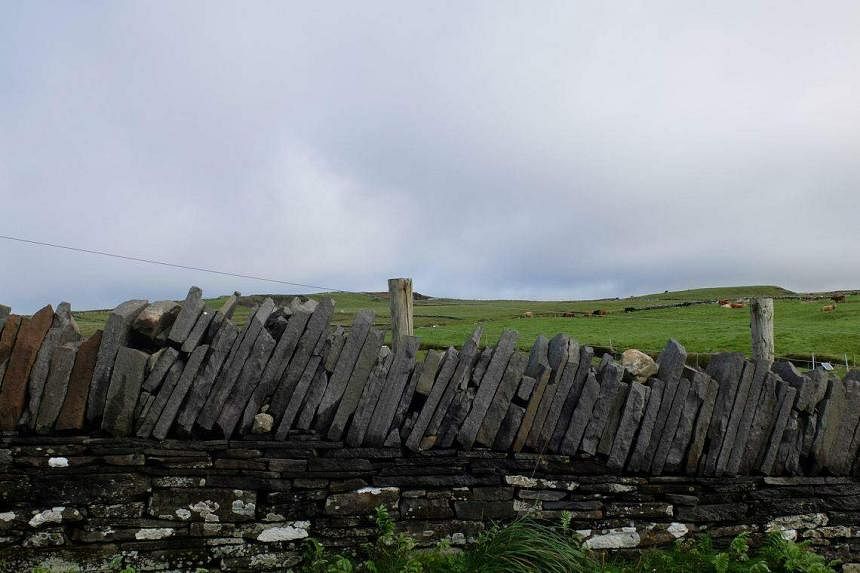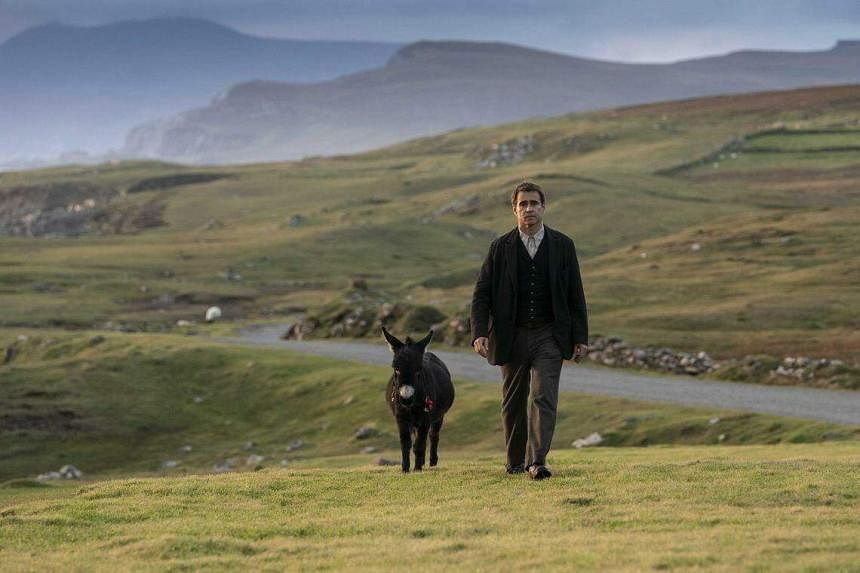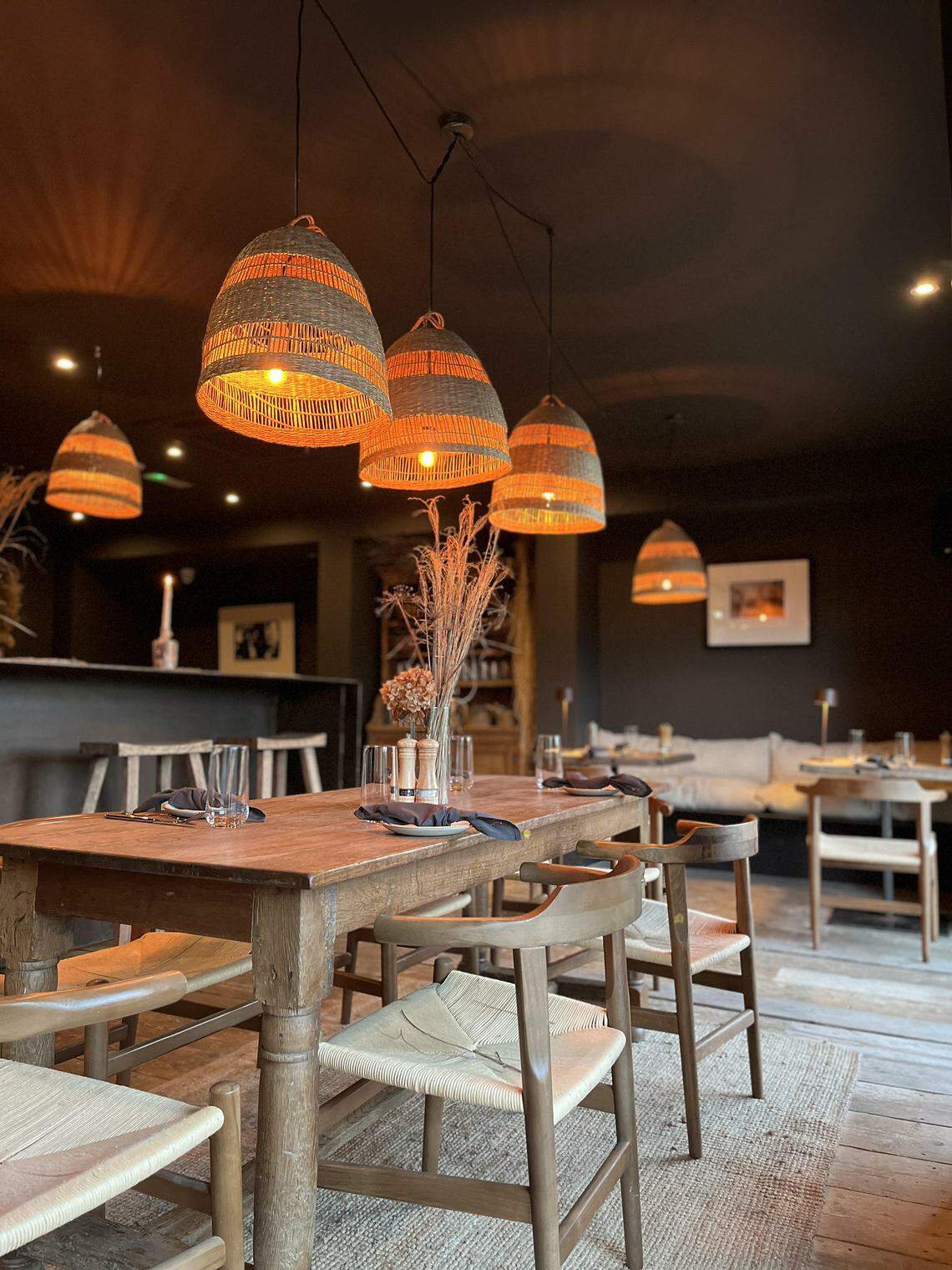IRELAND – It is a blustery morning until a sliver of sunshine pierces through the thick clouds, which I take as a sign that my road trip is off to a good start.
During an Irish summer, there is no guarantee of warm weather or sunshine, and it is quite possible to experience four seasons in a day.
But on this balmy day in August, the weather is on my side for a drive along the Wild Atlantic Way.
Spanning 2,600km, the Wild Atlantic Way tracks the western coast of Ireland starting from the well-heeled town of Kinsale in County Cork to the fabled Inishowen peninsula in County Donegal.
While you are bound to see 50 shades of green along the way, the journey also takes you through pristine beaches, ancient natural sites and quaint villages.
It is a drive so epic that travellers often explore only a portion of this coastal route at any one time.
I am lucky to know one part of the Wild Atlantic Way pretty well.
Since moving to Ireland in 2021, I have been spending extended periods near County Sligo, where my Irish in-laws have their beautiful cottage. And I have yet to tire of the windswept beach at Rosses Point or the cool surfing spot of Strandhill.
So when it came to choosing a low-key vacation with my husband and our 11-month-old, I picked another part of the Wild Atlantic Way: County Clare, which boasts the lunar-like landscape of the Burren region and the Cliffs of Moher.

With the boot of the car packed with swimsuits and rainproof jackets for three – you have to account for the pendulum swing of Irish weather – we head off for Ennistymon, a small town we use as our base for the four-day trip.
Above it all
Our first stop is Lahinch, known for its 1.6km-long golden sand beach.
I am determined to stop at Hugo’s – a bakery with a cult following – known for its luscious bakes including the pastel de nata and kouign amann.
Caffeinated and satisfied with our pastry haul, we head to Lahinch Beach, where we join others milling around the expansive promenade – from parents with toddlers licking their ice cream to locals walking their bouncy Labradors.
Lahinch is not only a favoured seaside destination but also a serious surfing stop, as evidenced by a group of hardy surfers riding the glistening waves.
After our leisurely stroll, we drive towards the Cliffs of Moher where a quintessential picture of the Irish countryside unfolds: impossibly green fields dotted with castle ruins and the healthiest-looking cows prancing about.
My eye is drawn to the precariously balanced Liscannor stone walls, which look like they were haphazardly thrown together yet seem to withstand the ever-changing weather.

Just half an hour later, we are at the edge of the Cliffs of Moher, a spectacular 14km stretch of rugged cliffs.
Most travellers begin their journey at the visitors’ centre, but we instead drive to a private farm that provides access to Guerin’s Path (str.sg/iGVL) for €5 (S$7.20) an adult.
We walk on a protected narrow path towards O’Brien’s Tower, stopping to take in the majestic view of this natural wonder formed more than 320 million years ago.
Rising to more than 210m at its highest point, the Cliffs of Moher make me feel miniscule – a feeling I also had when I visited the towering peaks of the Caucasus Mountains in Georgia.
The elemental setting is a showcase of nature’s sheer force, which is on full display that day, with howling winds dominating a portion of the paved path.
While I am trying to control the pram and keep my hood on, two female buskers seem undeterred by the winds and continue to play music.
The other locals, the thriving birdlife, also look right at home.
No surprise. A Special Protected Area for birds, the Cliffs of Moher is a nesting site for more than 20 species, including key colonies of guillemot, razorbill, kittiwake and puffin.
Rock and roll
The Cliffs of Moher and the Burren region both sit within a Unesco Global Geopark, an area with geology of international significance.
We set off for the Burren the next day, which spans 350 sq km and is best explored slowly.
The area’s name originates from “boireann”, which translates to “rocky place”, and that is exactly what it is. Formed between 340 million and 315 million years ago, this ancient limestone landscape was once hidden beneath long-forgotten seas that froze in the last great ice age.
Today, it looks as if cement was poured on the hills, with large rocks randomly sprinkled across the terrain and spilling down the slopes.
With a huge expanse of land blanketed in grey limestone, it feels like you are on a lunar expedition or in the pages of The Lord Of The Rings, specifically Middle-earth, which is said to have been inspired by author J.R.R. Tolkien’s visit to the Burren.

The maxim “the journey is the destination” firmly applies here, especially in parts such as Corkscrew Hill, where hairpin turns become even more interesting when you meet unusual rock formations.
The sun is out in full force as we enter the harbour village of Ballyvaughan, and the interstellar landscape sparkles almost like it was covered in snow. These scenes are a stark contrast to the emerald fields that one associates most with Ireland.
There are plenty of notable sites in the Burren region worth the drive. One not to miss is the archaeological megalithic monument Poulnabrone Dolmen – a portal tomb that appears to perform a gravity-defying balancing act.
Natural attractions aside, the Burren is home to creative endeavours such as The Burren Perfumery (burrenperfumery.com), a family-owned business that crafts scents and cosmetics reflecting the unique flora of the region.

Jutting out of the rocks are species of Arctic, Alpine and Mediterranean plants growing harmoniously side by side, and it is this unconventional mix that informs The Burren Perfumery’s organic beauty line.
After a day of exploring the twists and turns of the Burren, a grand feast is definitely in order. We drive to Flaggy Shore in Northern Clare, towards a culinary institution in the west: Linnane’s Lobster Bar (linnanesbar.com).
Established 300 years ago, Linnane’s is the ultimate expression of the “farm to fork” ethos. It is housed in a traditional thatched cottage next to the water, where the ultra-fresh oysters are harvested. The lobster, fish and other seafood are also sourced locally.
For generations, people have been coming for the perfectly cooked lobster, which is generous enough for two to share.
I am equally excited to savour the world-renowned Flaggy Shore oysters – available in gigas and dainties – plucked mere minutes away from our table. It ranks in the top three oysters I have ever had and is fantastic when paired with a pint of the black stuff.
Conquering the Aran Islands
A good night’s sleep, and we are ready to leave the mainland and head to Inishmore, the biggest of the Aran Islands. I also want to visit Inis Mean and Inisheer, but an island-hopping experience requires more than a day.
After a relaxed 50-minute ferry ride, we dock at Inishmore, and I can immediately feel time slowing down. I have my heart set on spending the day cycling – as is customary when exploring the Aran Islands – and, luckily, the bicycle rentals cater to parents, with child-seat options available.
The further we pedal away from the port, the more raw and rural it gets. We arrive at the other side of the island, which is lined with working farms separated by stone walls and the odd donkey marking its territory.
It is easy to imagine yourself in a scene from the Oscar-nominated film The Banshees Of Inisherin (2022), which was filmed further north on the Wild Atlantic Way on Achill Island and shares the same untouched landscape with Inishmore.

It is a place that looks and feels as if time has stopped, which is becoming a rare pleasure to experience.
Back on the mainland, we spend a few hours in the charming village of Doolin, which has a great crop of restaurants, cafes and bars. When travelling to a new part of Ireland, I always make sure to visit a local pub, so we go to McDermott’s, which is chosen by default because it is my husband’s surname. Thankfully, the locals also highly recommend it.

Though I have lived in Ireland for only two years, I find a lot of comfort tucking into pub favourites such as seafood chowder with brown bread. This one tastes far better than those I get in Dublin. I chalk it up to Doolin being right next to the Atlantic.
With our bellies full and holiday memories made, we head for home. There is still a lot of road left to do another Wild Atlantic Way adventure, and I am looking forward to the next time I can live life in the slow lane and drink the wild, salty Irish air.
Getting there

While there are no direct flights from Singapore to Dublin, most full-service airlines such as Singapore Airlines or Qatar Airways fly to the Irish capital with a stopover in Europe or the Middle East.
Once in Dublin, you can reach the west coast by rail – to certain cities such as Cork, Galway or Sligo – or you can opt to begin your roughly three-hour drive west by renting a car in The Fair City.
Staying there
Fiddle + Bow Collection

Located in Doolin village, Fiddle + Bow has tastefully designed rooms that would serve as a comfortable base for any explorer. There are four dining options on-site – Russells Seafood Bar, Russels Takeaway, The Tent and The Meadow – and it also runs the lovely Rocket House cafe at Doolin Pier.
The group also offers a handful of luxury lodges and self-catering holiday cottages for those who prefer a spacious house to call their own. You can take in an uninterrupted view of the Atlantic from your hot tub at Storytellers Cottage or experience a stay in a renovated old cottage, the Hawthorn.
Info: Rates start at $350 a night for hotel room and cottage/lodge rental; go to Fiddleandbow.ie

Gregans Castle Hotel in the Burren
Part of Small Luxury Hotels, this acclaimed 18th-century Manor House is one of the plushest places to park yourself in the Burren. Open fires and candle-lit tables amplify the charm of this heritage hotel, which is also known for its sustainable initiatives.
Each of the 20 individually designed rooms features hand-picked antiques and do not have television sets. Instead, they invite you to enjoy the hotel’s sprawling yet manicured gardens and the magnificent views stretching from the Burren Hills to Galway Bay.
Info: Rates start at $400 a night; go to Gregans.ie
Travel tips
Extend the journey
While it is best to plan your route in advance, leave room for getting lost and spur-of-the-moment stops, which is the true essence of a driving holiday.
If you have a few more days to spare, tack on the rest of County Galway (the Aran Islands are technically part of Galway, but are best reached from Clare). Stop by Galway City, a lively and notable culinary destination, then make your way to the stunning Connemara National Park.
A full plate
Ireland is huge on traceability, which means you will find the best local produce in almost any restaurant you visit.
Linnane’s juicy lobsters aside, there are plenty of places for gorgeous local food in Clare, such as Homestead Cottage and Oar Restaurant.
Renowned food producers such as the Burren Smokehouse (burrensmokehouse.com) for smoked salmon and Hazel Mountain Chocolate (hazelmountainchocolate.com) for sweet treats are also well worth a stop.
Get out of the car
A road trip does not mean you have to stay in your car the entire time. Factor short strolls, walking tours or impromptu hikes into your itinerary. Cycling is also a popular way to get around in the Burren.
For less active pursuits, a workshop such as a fragrance masterclass at The Burren Perfumery is a wonderful way to relax and embrace the slower pace.
Take your furry friends
Want to take your dog with you? Ireland is fast becoming a pet-friendly destination and the Wild Atlantic Way is heaven for any four-legged creature.
Both Fiddle + Bow and Gregans Castle Hotel welcome dogs, and more and more restaurants open their doors for “pawrents” to dine with their furkids (usually in the outdoor seating areas).
- Kissa Castaneda, the former editor-in-chief of Tatler Singapore, now calls Ireland home. A design and food lover, she is partial to a boutique hotel (plus points if it is an adaptive reuse property) and is always on the lookout for a hidden local restaurant.

